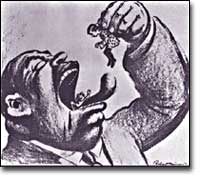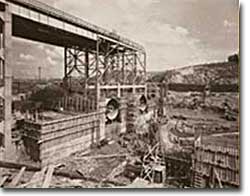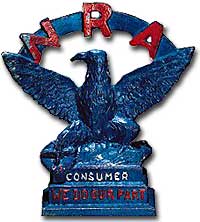49e. FDR's Alphabet Soup

In addition to setting a minimum wage and the maximum hours a person could work in a week, the National Recovery Administration outlawed child labor.
The New Deal was clearly the most ambitious legislative program ever attempted by Congress and an American President.
Progressive politicians saw their wildest dreams come alive. The Great Depression created an environment where the federal government accepted responsibility for curing a wide array of society's ills previously left to individuals, states, and local governments. This amount of regulation and involvement requires a vast upgrading of the government bureaucracy. An armada of government bureaus and regulatory agencies was erected to service the programs of the New Deal. Collectively, observers called them the "alphabet agencies."
While the CCC, CWA, and WPA were established to provide relief for the unemployed, the New Deal also provided a program intended to boost both industries and working Americans. The National Industrial Recovery Act contained legislation designed to spark business growth and to improve labor conditions. The National Recovery Administration attempted to create a managed economy by relieving businesses of antitrust laws to eliminate "wasteful competition." The NRA, like the AAA for farmers, attempted to create artificial scarcity with commodities. The hope was that higher prices would yield higher profits and higher wages leading to an economic recovery.

In 1933, Roosevelt asked Congress to create "a corporation clothed with the power of government but possessed of the flexibility and initiative of a private enterprise." The Tennessee Valley Authority was born, and economic recovery came to eastern Tennessee.
To avoid charges of socialism, the NRA allowed each industry to draw up a code setting production quotas, limiting hours of operation, or restricting construction of new factories. Once the President approved each code, pressure was put on each business to comply. A propaganda campaign reminiscent of World War I ensued. Firms that participated in the NRA displayed blue eagles reminding consumers of a company's apparent patriotism.
To enlist the support of labor unions, the NRA outlawed child labor, set maximum hours, and required a minimum wage. The greatest victory for labor unions was the guarantee of the right to collective bargaining, which led to a dramatic upsurge in union membership. Unfortunately, the NRA did little to improve the economy. The increase in prices actually caused a slight slowdown in the recovery. Workers complained that participating industries found loopholes to violate minimum wage and child labor obligations. When the Supreme Court finally declared the NRA unconstitutional in 1936, many had taken to calling it the "National Run Around."

By displaying the Blue Eagle, businesses indicated that they had joined the National Recovery Administration. By 1933, over 2 million participants in the NRA were hanging Blue Eagle window signs, posters and flags.
The government blazed other new trails by creating the Tennessee Valley Authority in May 1933. The geography of the Tennessee River Valley had long been a problem for its residents. Centuries of resource exploitation contributed to soil erosion and massive, unpredictable floods that left parts of seven states impoverished and underutilized.
Funds were authorized to construct 20 new dams and to teach residents better soil management. The hydroelectric power generated by the TVA was sold to the public at low prices, prompting complaints from private power companies that the government was presenting unfair competition. Soon flood control ceased to be a problem and FDR considered other regional projects.
There seemed to be no end to the alphabet soup. The Securities and Exchange Commission (SEC) was created to serve as a watchdog on the stock market. The Federal Housing Authority (FHA) provided low interest loans for new home construction. The Home Owners Loan Corporation (HOLC) allowed homeowners to refinance mortgages to prevent foreclosure or to make home improvements. The United States Housing Authority (USHA) initiated the idea of government-owned low-income housing projects. The Public Works Administration (PWA) created thousands of jobs by authorizing the building of roads, bridges, and dams. The National Youth Administration (NYA) provided college students with work-study jobs. The National Labor Relations Board (NLRB) was designed to protect the right of collective bargaining and to serve as a liaison between deadlock industrial and labor organizations.
Critics bemoaned the huge costs and rising national debt and spoon-feeding Americans. Regardless, many of the programs found in FDR's "alphabet soup" exist to this day.






